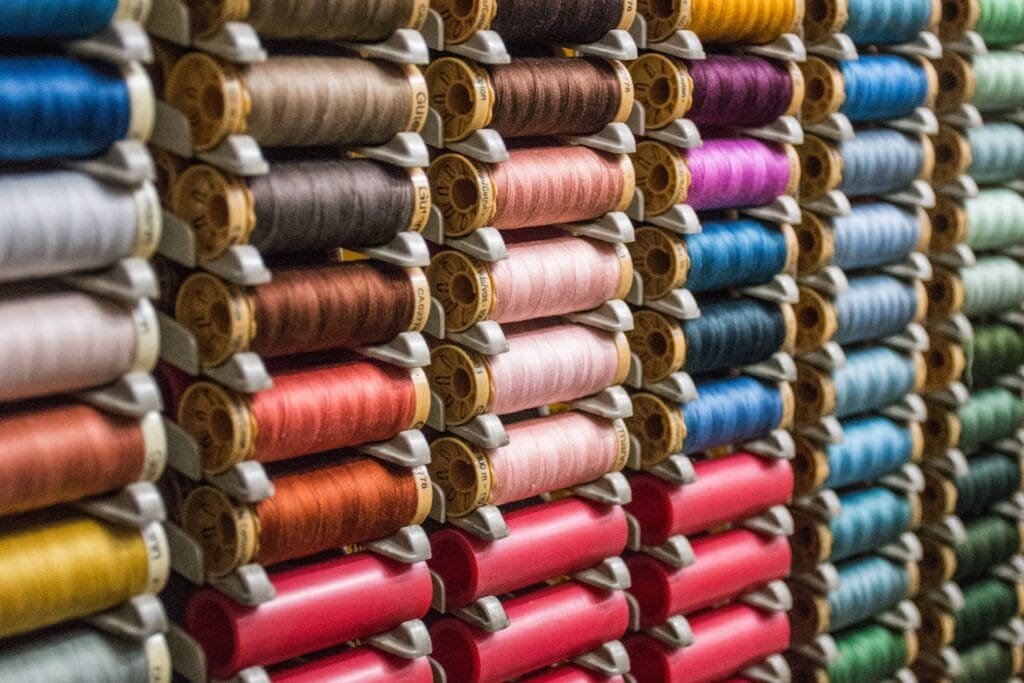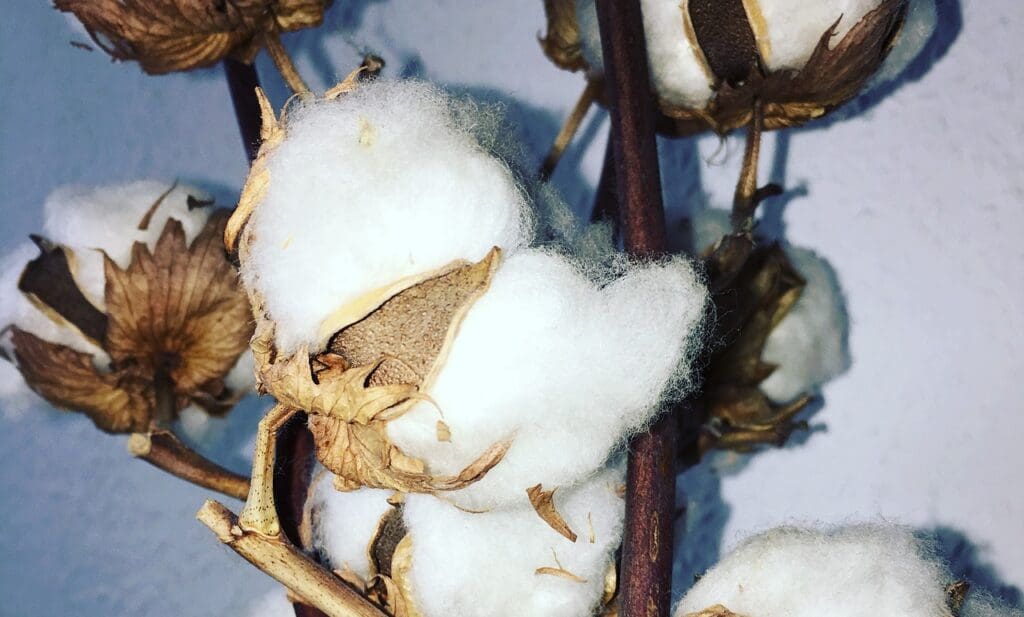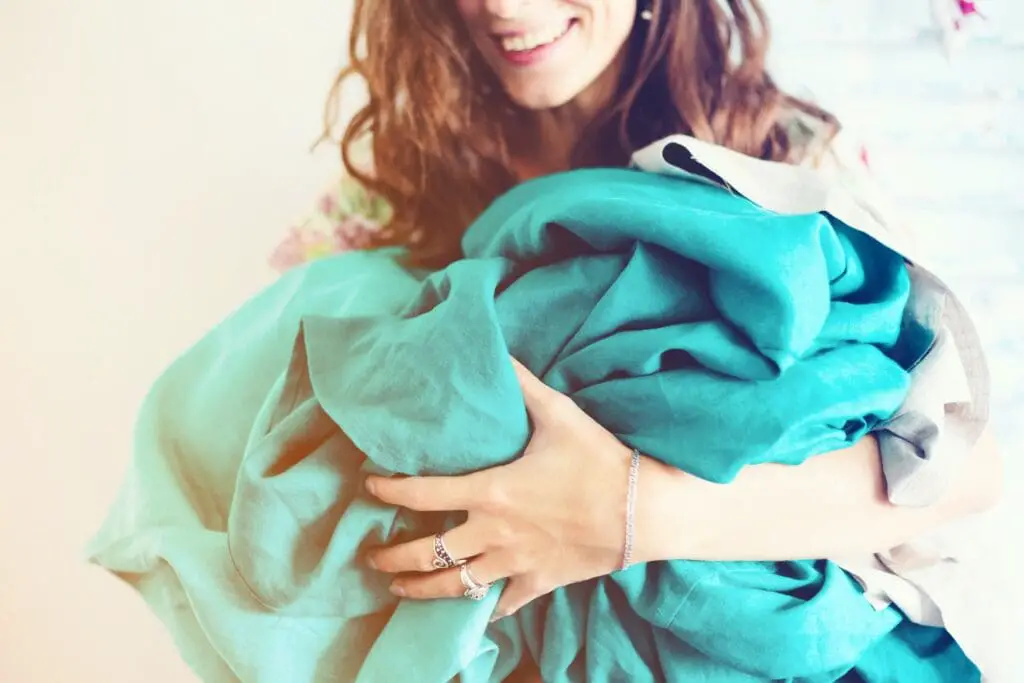Bamboo Vs. Cotton Fabric: a Detailed Comparison
Key Takeaways
- Bamboo fabric production requires less land area and water compared to cotton cultivation.
- Bamboo fabric has a lower carbon footprint and decomposes more rapidly than cotton fabric, making it more sustainable and biodegradable.
- Bamboo fabric is known for its softness, breathability, and antimicrobial properties, offering health advantages and versatility in the fashion industry.
- Bamboo fabric has higher tensile strength, better air circulation, and moisture evaporation compared to cotton fabric, resulting in increased durability and longevity.
Introduction
Bamboo fabric is derived from the cellulose fibers of bamboo plants and is known for its softness, breathability, and antimicrobial properties.
On the other hand, cotton fabric is made from the natural fibers of the cotton plant and is valued for its durability, absorbency, and versatility in various applications.
Understanding the characteristics and properties of these fabrics will help in making informed decisions regarding their use in different contexts.
Brief Overview of Bamboo Fabric
Bamboo fabric, also known as bamboo viscose or bamboo rayon, is a textile material derived from the pulp of bamboo plants. It has gained popularity in recent years due to its sustainability benefits and unique properties.
Here are some key points about bamboo fabric:
-
Sustainability benefits: Bamboo is a fast-growing plant that requires minimal water and no pesticides, making it an eco-friendly choice for fabric production.
-
Manufacturing techniques: The process of turning bamboo into fabric involves extracting cellulose from the plant, which is then dissolved in chemicals to create a viscous solution. This solution is then extruded through spinnerets to form fibers that can be spun into yarns.
-
Health benefits: Bamboo fabric is naturally hypoallergenic and gentle on sensitive skin, making it suitable for those with allergies or skin conditions.
-
Moisture wicking properties: Bamboo fabric has excellent moisture absorption and evaporation capabilities, keeping the wearer dry and comfortable even in humid conditions.
Overall, bamboo fabric offers not only sustainability benefits but also health advantages such as antibacterial properties and hypoallergenic qualities. Its versatility in the fashion industry makes it an attractive option for both clothing and home textiles.
Brief Overview of Cotton Fabric
Derived from the fibers of cotton plants, cotton fabric is a widely used textile material known for its versatility and comfort. Cotton has a long history, with evidence of its cultivation and use dating back to ancient civilizations such as the Indus Valley and Egypt. It is known for its softness, breathability, and absorbency, making it suitable for various applications including clothing, bedding, and towels.
The manufacturing process of cotton fabric involves ginning to remove seeds, spinning to create yarns, weaving or knitting to produce fabrics, and finishing treatments such as dyeing or printing. Cotton fabric offers numerous benefits such as durability, easy care requirements, hypoallergenic properties, and natural biodegradability. However, it also has some drawbacks including susceptibility to shrinkage and wrinkling.
Innovations in cotton fabric production have led to the development of organic cotton that is grown without pesticides or synthetic fertilizers and blended fabrics that combine cotton with other fibers for enhanced performance characteristics.
Overall, due to its favorable properties and wide availability in the market, cotton continues to be a popular choice among consumers worldwide.
Production Processes
The production processes of bamboo fabric and cotton fabric differ significantly in terms of their respective cultivation, harvesting, and manufacturing techniques.
Manufacturing processes:
- Bamboo fabric: The process involves extracting cellulose from the bamboo plant through a chemical-intensive process called hydrolysis alkalization. The extracted cellulose is then spun into yarns.
- Cotton fabric: Cotton fibers are harvested from the cotton plant, which are then cleaned, carded, and spun into yarns.

Resource consumption:
- Bamboo fabric: Bamboo requires less land area and water compared to cotton cultivation.
- Cotton fabric: Cotton cultivation requires large amounts of land, water, and pesticides.
Chemical usage:
- Bamboo fabric: The hydrolysis alkalization process involves the use of chemicals such as sodium hydroxide and carbon disulfide.
- Cotton fabric: Pesticides and fertilizers are commonly used in cotton cultivation.
Energy efficiency:
- Bamboo fabric: The manufacturing process for bamboo fabric is considered more energy-efficient than that of cotton.
Key Characteristics
Let’s focus on the key characteristics of softness, breathability, and durability in fabrics. But first we need to understand what we mean by each of these characteristics:
- Softness refers to the tactile sensation of a fabric, often associated with its smoothness and comfort against the skin.
- Breathability relates to a fabric’s ability to allow air circulation and moisture transfer, enhancing comfort by preventing overheating and humidity buildup.
- Durability refers to a fabric’s resistance to wear and tear, ensuring its longevity and functional performance over time.
These three attributes play vital roles in determining the overall quality and suitability of fabrics for different applications.
Softness
Both fabrics have their own unique characteristics that contribute to their comfort and texture. Here is a comparison of the softness between bamboo fabric and cotton fabric:
-
Bamboo Fabric: Known for its luxurious feel, bamboo fabric is incredibly soft and smooth against the skin. Its natural sheen adds to its appeal.
-
Cotton Fabric: Cotton is also known for its softness, but it may not be as silky as bamboo fabric. However, it still provides a comfortable and cozy feel.
-
Hypoallergenic Properties: Bamboo fabric has hypoallergenic qualities that make it ideal for individuals with sensitive skin or allergies.
-
Moisture Wicking and Temperature Regulation: Bamboo fabric excels in moisture absorption, keeping you dry and cool during hot weather while providing warmth in colder climates.
Breathability
In terms of breathability, a key factor to consider when comparing bamboo and cotton fabrics is their ability to allow air circulation and moisture evaporation. Both fabrics are known for their moisture-wicking properties, which help to keep the skin dry and comfortable.
Cotton fabric has long been favored for its breathability, as it allows air to pass through the fibers easily. However, bamboo fabric offers even better breathability due to its unique structure. The natural fibers of bamboo have microscopic gaps that aid in air circulation and facilitate moisture evaporation, making it an excellent choice for those who prioritize comfort and temperature regulation.
Additionally, bamboo fabric is hypoallergenic, making it suitable for individuals with sensitive skin or allergies.
Overall, considering the fabric composition, bamboo fabric outperforms cotton in terms of breathability while providing optimal comfort and environmental benefits.
Durability
When evaluating the durability of bamboo and cotton fabrics, it is important to consider their respective tensile strength and resistance to wear and tear. Both fabrics have different characteristics that contribute to their overall durability and longevity.
- Tensile Strength: Bamboo fabric has a higher tensile strength compared to cotton. This means that bamboo fabric is less likely to tear or stretch under tension, making it more durable in terms of withstanding everyday wear.
- Wear Resistance: Bamboo fabric has natural antimicrobial properties which make it resistant to odor-causing bacteria. This reduces the likelihood of fabric degradation due to microbial activity, enhancing its overall longevity.
- Fabric Lifespan: Cotton fabric tends to have a shorter lifespan compared to bamboo due to its lower tensile strength and susceptibility to shrinkage after multiple washes.
- Sturdiness and Resilience: Bamboo fabric is known for its sturdiness and resilience, allowing it to maintain its shape even after repeated use and washes.
Overall, while both bamboo and cotton fabrics can be durable, bamboo offers better strength, wear resistance, longer fabric lifespan, sturdiness, and resilience compared to cotton.
Environmental Impact and Sustainability
The environmental impact and sustainability of bamboo fabric compared to cotton fabric is a topic of interest in the textile industry. When it comes to carbon footprint, bamboo fabric performs better than cotton fabric. Bamboo plants absorb more carbon dioxide from the atmosphere compared to cotton plants.



Regarding water consumption, bamboo requires significantly less water than cotton for cultivation and processing. Additionally, pesticide use is minimal in the production of bamboo fabric as it naturally repels pests due to its antimicrobial properties. On the other hand, cotton farming heavily relies on pesticides that can harm the environment and human health.
Bamboo cultivation helps prevent land degradation as it does not require extensive land use like cotton farming does. Also, bamboo is a renewable resource that grows quickly without needing replanting efforts,
In terms of biodegradability, both fabrics are biodegradable; however, bamboo fabric decomposes more rapidly than cotton fabric.
On balance, for these reasons, bamboo is the more sustainably derived product with an overall lower environmental impact than cotton.
Care and Maintenance
Care and maintenance of bamboo fabric and cotton fabric is an important consideration. Comparing the care and maintenance requirements for each, the following points are of note:
1. Washing: Bamboo fabric can be machine washed with cold water and mild detergent. It is recommended to use the gentle cycle and avoid using bleach or fabric softener. Cotton fabric can also be machine washed, but it can tolerate higher temperatures and harsher detergents.
2. Drying: Bamboo fabric should be air-dried or tumble dried on low heat. It is important to avoid excessive heat as it can damage the fabric. Cotton fabric can be tumble dried on low to medium heat or air-dried.
3. Ironing: Bamboo fabric requires low to medium heat for ironing. It is recommended to iron the fabric while it is still slightly damp to prevent damage. Cotton fabric can be ironed at higher temperatures.
4. Shrinkage: Bamboo fabric has minimal shrinkage, so it maintains its shape well after washing. Cotton fabric, on the other hand, has a higher tendency to shrink, especially if washed in hot water or dried at high temperatures.
5. Wrinkling: Bamboo fabric has natural wrinkle-resistant properties and tends to wrinkle less than cotton fabric. Cotton fabric is more prone to wrinkling and may require ironing or steaming to remove wrinkles.
6. Odor control: Bamboo fabric has natural antibacterial and odor-resistant properties, making it less likely to retain odors compared to cotton fabric. Cotton fabric may require more frequent washing to remove odors.
Cost and Affordability
To understand the cost comparison between bamboo and cotton fabrics, it is essential to analyze various affordability factors, including long-term savings and quality vs. price. Bamboo fabric may initially be more expensive than cotton, but its durability and longevity result in long-term savings.
The following table compares the cost aspects of bamboo and cotton fabrics:
| Factors | Bamboo Fabric | Cotton Fabric |
|---|---|---|
| Initial Cost | Higher | Lower |
| Long-Term Savings | Higher | Lower |
| Durability | High | Moderate |
| Price Fluctuations | Stable | Fluctuating |
Popular Uses



The popular uses of bamboo and cotton fabrics to evaluate their versatility and application in different industries.
-
Apparel: Both bamboo and cotton fabrics are widely used in the fashion industry for making clothes such as shirts, dresses, and activewear. Cotton is known for its softness and breathability, while bamboo fabric offers a silky feel and has natural moisture-wicking properties.
-
Home textiles: Bamboo and cotton fabrics are used for making bed sheets, pillowcases, towels, curtains, and upholstery due to their durability and comfort. Bamboo is popular for bedding due to its ability to regulate body temperature and its hypoallergenic properties.
-
Baby products: Cotton fabric is commonly used in baby clothing due to its gentle feel on the skin. However bamboo fabric is gaining popularity in this sector as it is soft, durable, naturally anti-bacterial and and has hypoallergenic qualities.
-
Eco-friendly alternatives: Bamboo fabric is often promoted and utlilised as an eco-friendly alternative to various cotton products since it requires less water during cultivation and does not require pesticides or fertilizers.
Final Thoughts
In conclusion, an assessment of the pros and cons of bamboo fabric compared with cotton fabric reveals that bamboo fabric offers unique advantages in terms of sustainability, antibacterial properties, UV resistance, and versatility.
-
Comfort level: Bamboo fabric is known for its softness and breathability, providing a comfortable wearing experience.
-
Wearability: Due to its moisture-wicking properties, bamboo fabric keeps the wearer dry and odor-free even during intense physical activities.
-
Eco-friendliness: Bamboo is a highly sustainable plant that requires minimal water and no pesticides to grow, making it an environmentally friendly choice.
-
Health benefits: Bamboo fabric naturally resists bacteria growth, making it hypoallergenic and suitable for individuals with sensitive skin.
These factors contribute to the increasing popularity of bamboo fabric among consumers who value comfort, eco-friendliness, and health benefits in their clothing choices.
Frequently Asked Questions
Q: How do bamboo sheets compare to cotton sheets?
A: Bamboo sheets have several advantages over cotton sheets. They are softer and silkier to the touch, more breathable, and more absorbent. Bamboo fabric also tends to hold its color better and is less prone to wrinkling compared to cotton.
Q: Are there different types of bamboo fabric?
A: Yes, there are different types of bamboo fabric available. The most common types include bamboo rayon, bamboo linen, and bamboo cotton blends. Each type has its own unique characteristics and properties.
Q: What are the cons of bamboo clothing?
A: While bamboo fabric has many benefits, there are also some drawbacks to consider. One of the main cons is that bamboo fabric can be more expensive than traditional cotton fabric. Additionally, some bamboo clothing may contain chemical additives used in the manufacturing process. However, there are also many brands that produce organic and eco-friendly bamboo clothing options.
Q: Is bamboo fabric cooler than cotton?
A: Yes, bamboo fabric is generally cooler than cotton. The natural properties of bamboo fibers make it highly breathable, allowing for better air circulation and heat regulation. This makes bamboo fabric a great choice for hot and humid climates or for those who tend to sleep hot.

